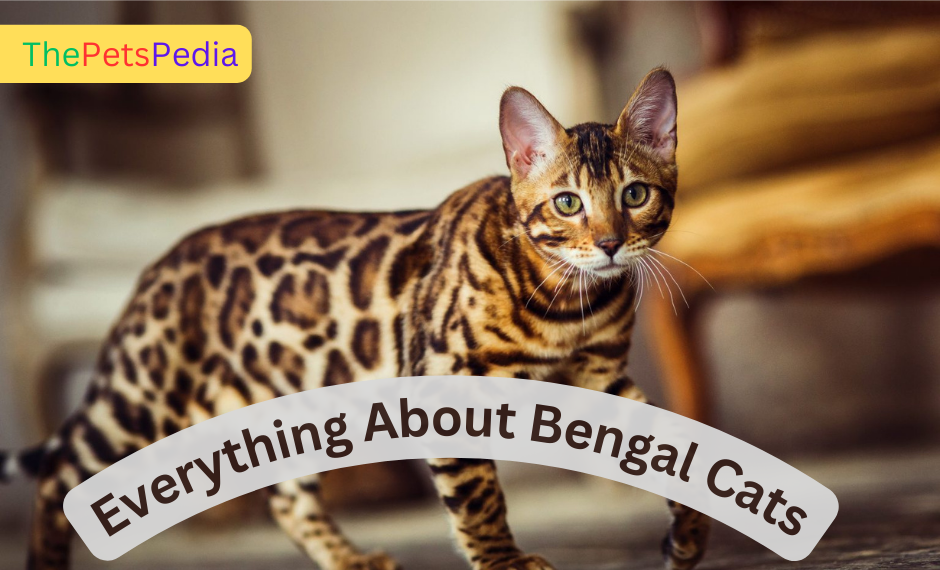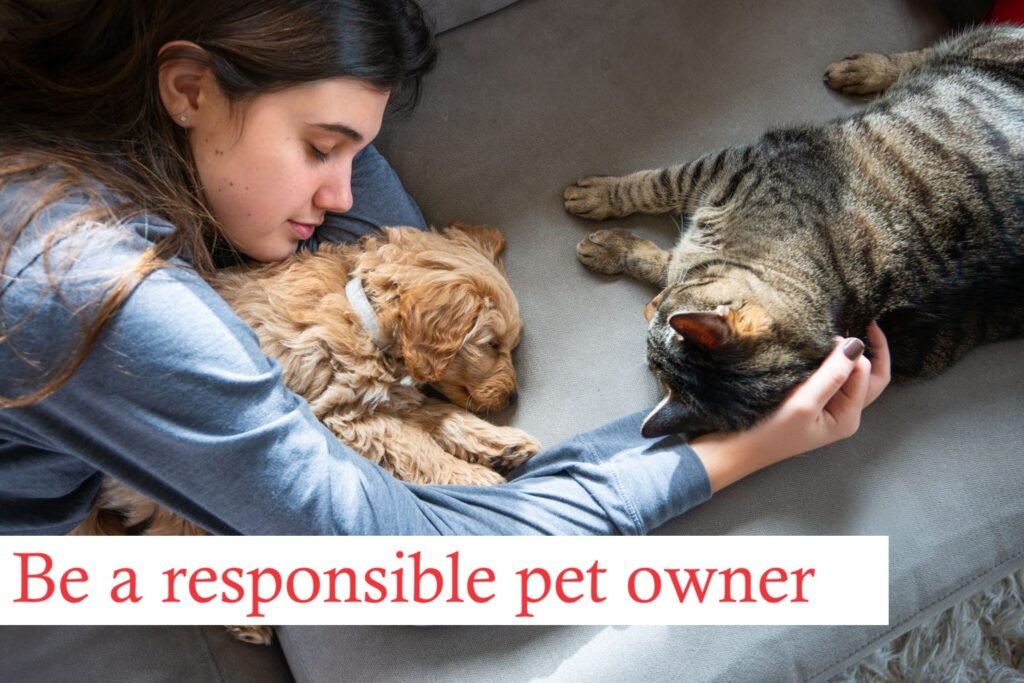Bengal cats are an exotic breed known for their striking appearance, energetic personality, and wild ancestry. With a coat reminiscent of a leopard’s spots and a playful, active nature, Bengal cats are a favorite among cat enthusiasts looking for a unique and engaging pet. This guide will give you everything you need about Bengal cats, including their history, appearance, temperament, care needs, and joint health issues.
| Characteristic | Comprehensive Details |
| Size & Weight | Medium to large-sized, muscular, athletic |
| Coat Type | Short to medium, sleek, soft, and dense |
| Coat Colors | Brown, Snow, and Silver, with spotted or marbled patterns |
| Eye Color | Green, gold, blue (in snow Bengals) |
| Temperament | Active, playful, curious, intelligent |
| Body Structure | Slender, muscular, strong build |
| Health Concerns | Prone to heart disease, hip dysplasia, obesity |
| Life Expectancy | 12-16 years with proper care |
A Brief History of the Bengal Cat Breed
The Bengal cat is a hybrid breed, initially created by crossing domestic cats with the Asian Leopard Cat. The goal was to produce a cat with a wild appearance but a domesticated temperament. The breed was first developed in the United States during the 1960s and 1970s by Jean Mill, who sought to create a companion that looked like a wild cat but was loving and safe at home.
Bengal cats were officially recognized by the International Cat Association (TICA) in 1983 and have since become one of the most popular cat breeds in the world. With their striking coats and lively personalities, Bengal cats have become a sensation in cat shows and households.
Physical Characteristics
| Characteristic | Details |
| Size & Weight | 8 to 15 pounds (3.6 to 6.8 kg) |
| Coat Type | Short to medium, soft, and luxurious |
| Coat Patterns | Spotted, marbled with rosettes resembling a wild cat’s coat |
| Eye Color | Bright green, gold, blue (snow varieties) |
| Head Shape | Small, rounded with high cheekbones |
| Body Type | Sleek, muscular, and athletic |
Coat and Color
Bengal cats are renowned for their exotic appearance, featuring a sleek coat with distinctive patterns. The most common patterns include spots and marbling, which give them a wild and luxurious look. Their coat colors range from brown to snow and silver, each with unique markings resembling those of a wild leopard or jaguar.
Eyes
Bengal cats have large, expressive eyes that can be green, gold, or blue, depending on the coat color. Their vividness and striking coat pattern make them one of the most visually stunning breeds. Their gaze is often intense and curious, reflecting their alert and active nature.
Temperament and Behavior
| Behavior Trait | Description |
| Active | Energetic and loves to play |
| Curious | Always exploring their environment |
| Social | Enjoys the company of humans and other pets |
| Intelligent | Quick learners, capable of solving puzzles |
| Vocal | Communicates with chirps and meows |
Active and Playful
These cats are highly active and require plenty of physical and mental stimulation. They enjoy interactive toys, climbing structures, and activities that mimic hunting. Their playful nature makes them a joy to watch, and they often engage in antics that keep their owners entertained.
Intelligent and Curious
These cats are known for their intelligence and curiosity. They are quick learners and can be taught tricks and commands. Bengals often find creative ways to interact with their surroundings, whether figuring out how to open doors or engaging with puzzle toys. Their inquisitive nature means they are constantly exploring, so a stimulating environment is necessary for their well-being.
How to Ensure Your Bengal Cat Stays Healthy
Grooming Tips:
While Bengal cats have short, low-maintenance coats, regular grooming helps keep their fur shiny and healthy.
- Brushing: Brush your cat weekly with a soft brush to remove loose hairs and reduce shedding.
- Bathing: Bengals usually don’t need frequent baths but use a gentle cat shampoo when necessary.
- Nail Trimming: Regular nail trimming prevents overgrowth and potential injury.
- Ear Cleaning: Check their ears regularly for signs of wax buildup and clean them as needed with a vet-recommended solution.
Diet and Nutrition:
A balanced diet is crucial for maintaining your Bengal cat’s health and energy levels. Their active lifestyle requires high-quality nutrition.
| Diet Type | Recommendations |
| High-Protein Diet | Supports their muscular build and energy needs |
| Wet Food | Helps with hydration and provides balanced nutrients |
| Dry Food | Maintains dental health, choose a grain-free option |
| Portion Control | Prevents overeating and obesity |
| Fresh Water | Always provide clean, fresh water |
Exercise and Enrichment:
Bengal cats are highly active and need regular exercise to stay healthy and happy. Providing engaging toys and activities is essential.
- Interactive Toys: Bengals love toys like feather wands, laser pointers, and puzzle feeders.
- Climbing Structures: Cat trees and shelves are perfect for climbing and observing their environment.
- Water Play: Many Bengals are fascinated by water and may enjoy playing in a shallow bowl or fountain.
- Social Time: Spend quality time interacting with your pet cat to keep them mentally stimulated and emotionally fulfilled.
Common Health Issues in Bengal Cats
Heart Disease:
Bengal cats are prone to a genetic heart condition known as hypertrophic cardiomyopathy (HCM). Regular vet check-ups and early detection are key to managing this condition.
Hip Dysplasia:
This breed can be susceptible to hip dysplasia, which affects their hip joints. Maintaining a healthy weight and providing supportive bedding can help reduce the risk.
Obesity:
These cats are naturally muscular but can become overweight if they don’t exercise enough or are overfed. A balanced diet and regular activity are crucial to keeping them at a healthy weight.
Lifespan and Quality of Life
Bengal cats typically live between 12 and 16 years, though some may live even longer with proper care. Regular vet visits, a healthy diet, and social interaction contribute to a long, happy life. If you’re wondering how long cats live, consider their genetics, diet, and overall care.
Socialization and Training
Early Socialization:
Introducing your Bengal kitten to various people, pets, and environments early on will help them grow into well-adjusted adult cats.
Litter Training:
Bengals are intelligent and usually pick up litter training quickly. Keep the litter box clean and in a quiet, accessible place.
Behavioral Training:
Bengal cats can be trained to perform tricks and follow commands using positive reinforcement techniques. Treats and praise can be used to encourage good behavior.
Living Standards of Bengal Cats
Home Environment:
Bengal cats adapt well to different environments but thrive in homes with ample space to explore and play.
- Safety: Ensure windows and balconies are secure to prevent accidents.
- Space: Provide plenty of vertical and horizontal space for your cat to climb and roam.
- Enrichment: Keep your cats entertained with toys, scratching posts, and interactive playtime.
Compatibility with Other Pets:
Bengal cats usually get along well with other pets, including dogs and cats, as long as they are introduced gradually and supervised.
Where to Adopt or Purchase a Bengal Cat
From Breeders:
If you purchase a Bengal cat from a breeder, ensure the breeder is reputable and follows ethical breeding practices.
- Health Records: Request health records and information about genetic testing.
- Visit: Visit the breeder’s facility to meet the kittens and their parents and see their living conditions.
Adoption From a Shelter:
Many Bengal cats can be adopted through local shelters or breed-specific rescue organizations. Adopting can be an excellent way to find a loving companion.
- Shelters: Check with local shelters for Bengal cats available for adoption.
- Rescue Groups: Bengal cat rescues focus specifically on this breed and often have cats of all ages looking for homes.
Final Thoughts
Bengal cats are a unique and captivating breed known for their wild appearance and lively personalities. Their playful nature, intelligence, and affectionate demeanor make them an excellent addition to any home. Whether you adopt or purchase, a Bengal cat will bring joy, excitement, and companionship. These exotic beauties can be loving and loyal friends with proper care and attention for many years.



